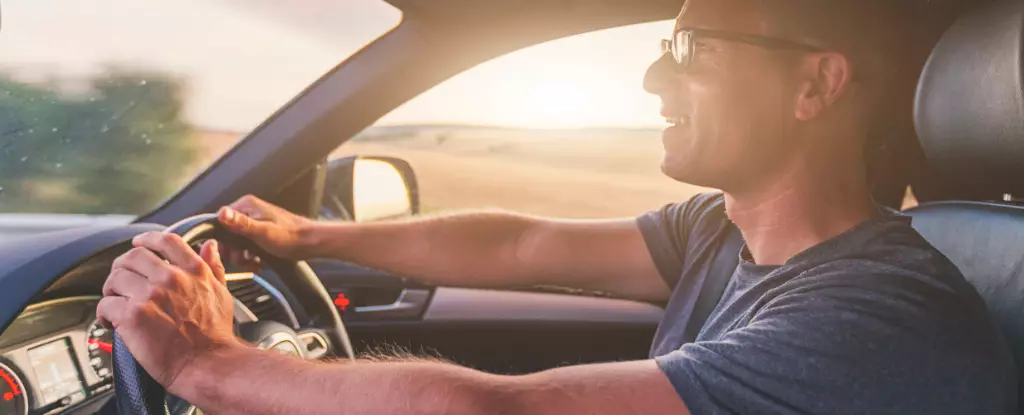When discussing the dangers of sun exposure, it is essential to comprehend the nature of ultraviolet (UV) radiation, which primarily comes in three forms: UVA, UVB, and UVC. UVC is mostly absorbed by the Earth’s atmosphere and does not pose a threat to us on the ground. UVA makes up about 95% of the sun’s UV radiation that reaches us and penetrates deeply into the skin, leading to cellular damage and increasing the risk of skin cancer and premature aging. Conversely, UVB radiation, constituting only around 5% of incoming UV rays, primarily affects the skin’s upper layers and is the chief culprit behind sunburns. Understanding these distinctions is critical when evaluating skin damage risks while driving or being indoors.
The Role of Glass in UV Protection
An intriguing barrier against UV radiation is glass, which we encounter daily in vehicles and buildings. For instance, the good news is that glass commonly used in homes and vehicles effectively blocks most UVB radiation. However, not all glass is created equal when it comes to UVA protection. Laminated glass, often employed in car windshields, provides robust protection by blocking nearly all UVA rays, around 98%. In contrast, the side and rear windows of vehicles are typically made from tempered glass, which does not offer the same level of protection. Studies suggest that UVA penetration through these windows can range significantly; research indicated variations from 4% up to nearly 56%, based on factors like the type of glass used and whether or not it has been treated or tinted.
Tinting the windows of a vehicle serves as an effective solution for mitigating UV exposure. When tinted, car windows can block approximately 95% of UVA radiation, decreasing the likelihood of skin damage during long drives. A study conducted in Saudi Arabia demonstrated real-time impacts of UV exposure on drivers, revealing UV index levels reaching 3.5 while driving. In Australia, any UV index above 3 typically calls for sun protection measures. Hence, if your car windows are tinted, the necessity of applying sunscreen during regular commutes may be less urgent. Nevertheless, those with untinted windows must remain cautious, as ongoing exposure can accumulate and cause significant skin damage over time.
While many people may perceive driving as a mundane activity, the risks associated with prolonged sun exposure while behind the wheel merit serious consideration. Numerous studies have shown an alarming correlation between sun exposure while driving and heightened skin cancer rates, particularly on the driver’s side of the body. In regions where vehicles are designed with the driver’s seat on the left, an observable trend shows that skin cancers are significantly more prevalent on the left side of the face, arm, and scalp. This increased incidence could partially be attributed to the differential UV exposure from unprotected windows and the cumulative effect of time spent driving.
Residential and Office Spaces: UV Radiation Inside
The UV radiation threat extends beyond the confines of automobiles; home and office windows can also compromise skin health. Most common residential window glass allows between 45-75% of UVA radiation to pass through, presenting a considerable risk, especially for individuals who spend long hours indoors. However, architectural choices such as double-glazing or using laminated glass can significantly improve this situation. Commercial spaces often employ more advanced glass solutions with enhanced reflective or UV-absorbent chemicals, allowing for better protection.
The risk for skin damage peaks when users opt to lower their windows or extend their arms out into direct sunlight. While having a window down may feel refreshing, it increases the skin’s exposure to harmful UVA rays. To mitigate risks in vehicles without tinted windows, keeping windows up may reduce overall UVA exposure. Meanwhile, homeowners should consider window films or tinted layers to bolster UVA protection, thereby creating a safer environment.
Taking a proactive approach towards UV exposure—whether during long drives or while relaxing at home—is essential. The necessity of using sunscreen should be evaluated based on various factors, including window types, time of day, and latitude. For those unprotected by tinted glass, the risk of sunburn increases significantly during peak hours. Whether you’re driving or lounging indoors, practicing sun safety with protective measures, including window tinting and sunscreen, can ensure well-being and skin health, safeguarding against the silent yet formidable threat of UV radiation.


Leave a Reply